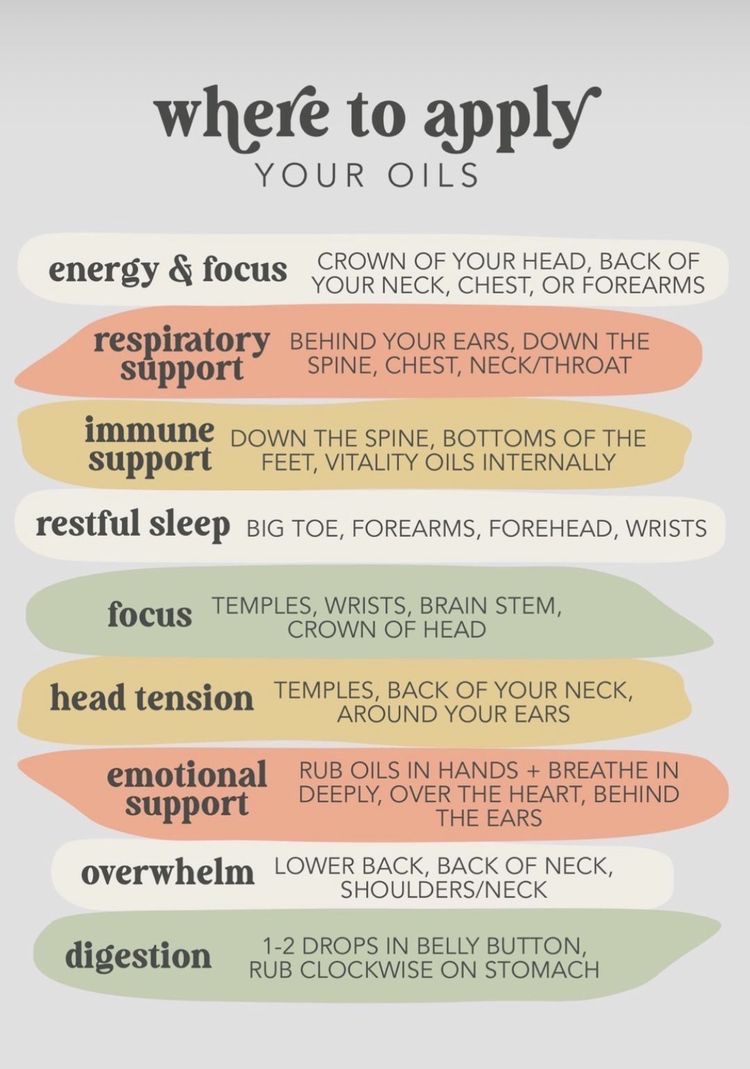When I first started using essential oils, I mostly used a diffuser or I would slap the oils on my body with random intent. I liked how good the essential oils made my house smell, and I loved the aromatherapeutic benefits I was experiencing, like lavender helping me sleep better at night, or peppermint helping soothe a headache. I loved how my body smelled, also. At that time, I had no idea that there are benefits to using essentials in a physical well-being way. Once I dug deeper into the natural world and had been using essential oils over time I learned that it is beneficial to apply essential oils directly on the body, like when trying to ease an upset stomach or when treating thinning hair. Once I realized that plant medicine came long before drug-store medicine I was hooked on learning more. I got a giant resource book and began learning everything I could and started to swap out over the counter stuff for these precious little plants.
I needed to learn when to put essential oils on the body, where to apply them, and how to dilute oils properly so they are effective without causing harm. I committed to learning about essential oils much like a person grabs a cookbook and learns how to cook. In time, it became intuitive, much like cooking.
Where Is the Best Place on the Body to Apply Essential Oils?
There is no single perfect place on the body to apply essential oils.
- If it’s a localized issue like stomachache or sore muscles, then apply the essential oils directly to the part of the body where the issue is occurring.
- However, if it’s a more generalized issue like lack of focus, trouble sleeping, or anxiety, then apply essential oils at your pulse points: wrists, temples, behind the ears, neck, chest, or inner elbow. Pulse points are the parts of the body where major arteries run closest to the skin. Applying essential oils at pulse points gets the essential oils into the bloodstream the fastest, and you start feeling the benefits of the essential oils sooner. This is because pulse points of the body are like roots of a plant. When feeding or watering a plant, you target the roots because that is where the plant absorbs nutrients and distributes them to the rest of the plant.
If you’ve been researching aromatherapy, you might have come across pulse points. These are places on the body that provide a direct route for essential oils to access your bloodstream and, in turn, your brain.
Pulse points in aromatherapy refer to a few specific locations on the body where major arteries run closest to the surface of the skin. This means that anything applied to the skin at these points diffuses more quickly into the bloodstream than anywhere else.
So, if you’re planning to apply essential oils topically, it’s best to do so at one of your pulse points.
How Do You Apply Essential Oils Directly to the Skin?
When applying essential oils topically to skin, always dilute them with a carrier oil ( coconut oil, sweet almond oil, jojoba, or olive oil). Essential oils are very powerful, so it’s better to be safe than sorry. My favorite carrier oil is generally fractionated coconut oil, but for my face I love rosehip oil. Recently I had a horrific stomach bug and in my desperation for relief I was dumping oils straight on my skin and I sure paid the price. On day two of the stomach bug, my belly had broke out in a horrible rash. So, USE a carrier! Believe me, I know this and I still screw up.
I came across this chart and it is a must have.
Using essential oils with intention has been a part of my practice (aside from the desperate stomach bug mishap) for many years. I try to tune into what my body is wanting to feel, and then choose the plants accordingly. Once you have a general idea of which essential oils support which area of our body then we can choose which oils more deliberately. You grab the essential oil that most closely fits what you are wanting to feel and then apply!
For people just getting started using essential oils, I recommend this gorgeous ebook and then I supply education and mentoring along the way as part of my VIP community.
Follow me for more goodness!

